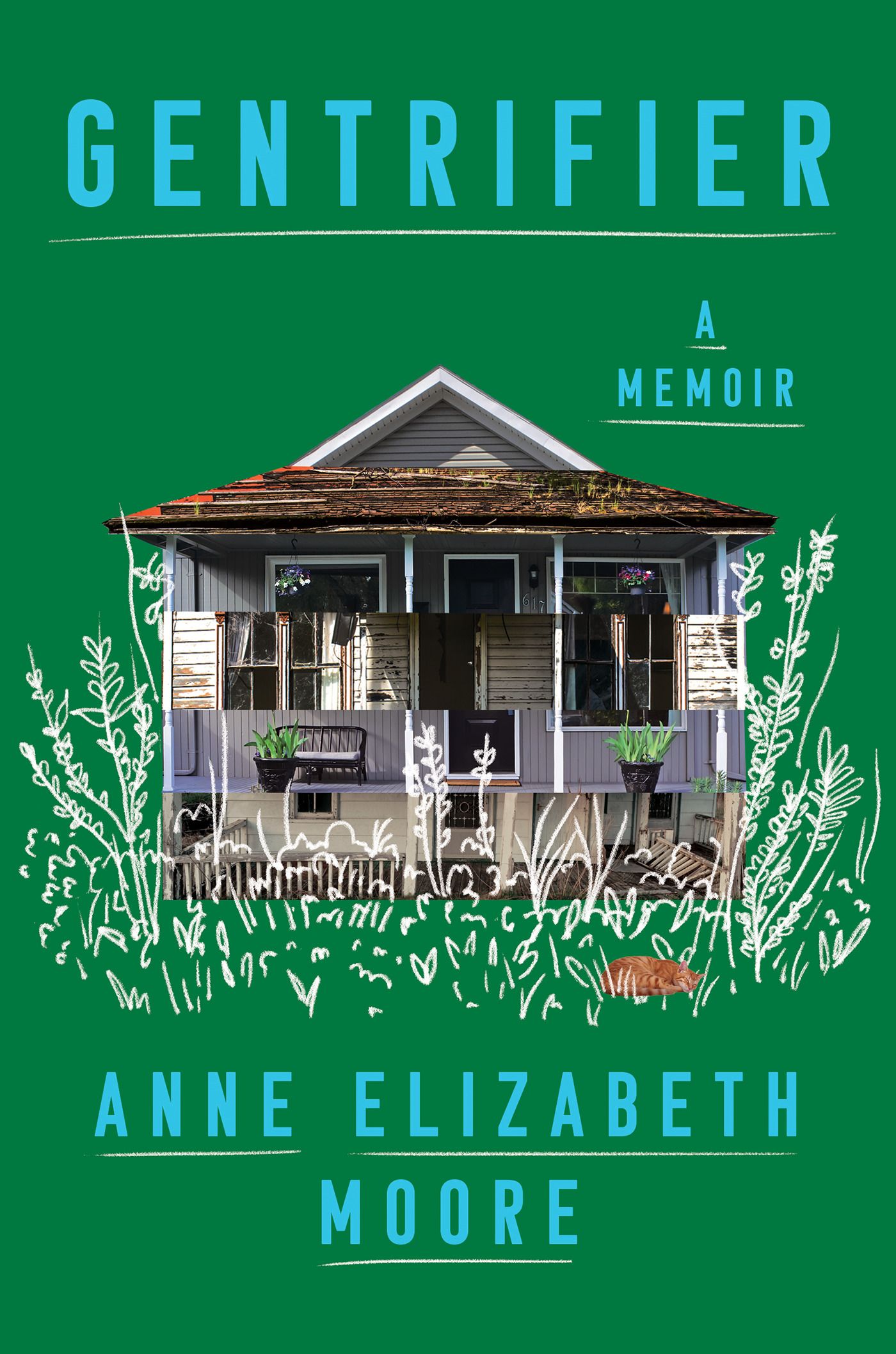A House of One’s Own: Anne Elizabeth Moore’s New Memoir on the American Housing Crisis

Image courtesy of Catapult
Image courtesy of Catapult
by Rowan Beaird
In 2016, alum Anne Elizabeth Moore (MA 1998) was given what many artists dream of: a free house in Detroit where she could live, research, and create.
This incredible gift was facilitated by a local arts organization in an attempt to revitalize the city’s arts community. But what first appeared like a simple solution quickly showed its complexities—issues of race, housing inequity, and capitalism—all of which Moore explores in her new memoir, Gentrifier. The book, which has received rave reviews in Kirkus, Publishers Weekly, Library Journal, and Booklist, is poignant, sharp, and timely.
Moore talks with us about her experiences in Detroit, building community across lines of difference, and what books are currently on her nightstand.
What inspired you to write Gentrifier?
In 2016 I won a free house in Detroit, and the house turned out to be very expensive and belonged to someone else. Even though I am someone who writes books anyway, when something like this happens to you, you definitely write a book about it.
How does the community an artist lives in shape them, and vice versa? What responsibility does an artist have toward this community?
I moved to Chicago in 1994 to participate in what was then sometimes called new genre public art and eventually came to be called social practices. While I don’t work in that mode anymore, a very large part of how I approach art-making comes from the idea that the most interesting work emerges from interactions between people. That, in fact, the only work worth doing is done in tandem with others, and that what lasts is not the outcome of those specific projects or acts but the relationship that gets built while undertaking them. Even before I was an artist, I was thinking about basic concepts of anarchism, this idea that we can only survive for and with and alongside and through each other. The nature of that work has changed for me since I began focusing on writing, but central to how I think about living in the world and creating work is the notion that we are a reflection of who we are surrounded by. We must therefore allow space in that work for those we live among to appear as themselves.

Anne Elizabeth Moore. Photo courtesy of the author
Anne Elizabeth Moore. Photo courtesy of the author
This memoir describes your experiences as a white woman moving into a majority Bangladeshi neighborhood. How did your time in Detroit make you think differently about the role of race when building community?
I was born in South Dakota while my father was a public health officer with the Coast Guard on the Rosebud Reservation, so I feel really lucky that I was surrounded by folks in my earliest days who were absolutely not buying American imperialism or white supremacy or even white normativity. And I worked on and off in Cambodia on various long-term self-publishing and organizing projects for seven years before moving to a Detroit neighborhood populated by folks from Bangladesh—and the two countries share more than proximity, of course, since they both rely on women’s participation in the low-wage garment industry to survive. So while race plays a role in community-building work, I’d say that my own experience shows that building efforts across multiple identities including race, but also including immigration status, economic status, gender identity, etc., makes for a stronger community, one that I find personally more engaging and challenging, although I can only speak for myself. There are forces, in Detroit and elsewhere, that suggest that communities are strongest when they unite around a single common homogeneous aspect of an identity, but I have never found that to be true.
“A very large part of how I approach art-making comes from the idea that the most interesting work emerges from interactions between people.”
What's one thing you hope everyone takes away from the experience of reading your book?
The book consists of these little vignettes, funny stories you might share over cocktails, so it’s very easy to read very quickly. But it is a very deep look at housing justice, so the idea is that these difficult concepts get snuck into this extremely palatable form. It’s like a joke book about housing in America where the punchline is winning a free house. So although what people are drawn to is the humor of it, what I hope they take away is a pretty solid understanding of the American housing crisis.
What books are on your nightstand?
Kerri Arsenault’s Mill Town, Rachel Yoder’s Nightbitch, and Akwaeke Emezi’s Dear Senthuran. I’m also reading Don DeLillo’s Underworld for the first time, but it’s not actually on my nightstand. I think I left it in my car. ■
{{[http://www.saic.edu/news/alums]ALUMS}} {{[http://www.saic.edu/news/artconnectsus]ART CONNECTS US}}
